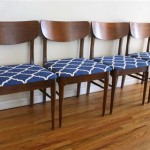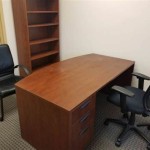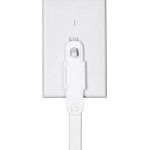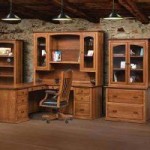Furniture Mother of Pearl Inlay: A Timeless Art
Mother of pearl inlay, also known as nacre inlay, is an intricate decorative technique involving the insertion of iridescent shell pieces into the surface of furniture and other objects. This practice, steeped in history and tradition, transforms ordinary pieces into works of art, adding a touch of luxury, elegance, and visual interest. The unique shimmering effect of mother of pearl, combined with expert craftsmanship, makes furniture with mother of pearl inlay highly sought after and admired.
The origins of mother of pearl inlay can be traced back centuries, with evidence found in various cultures across the globe. Ancient civilizations, including the Egyptians, Romans, and those in the Far East, recognized the beauty and value of mother of pearl. They incorporated it into jewelry, decorative items, and, over time, furniture. The technique spread through trade routes, evolving and adapting to the artistic styles of different regions. The laborious process and the inherent value of the materials involved contributed to the perception of these pieces as objects of prestige and status.
The process of creating mother of pearl inlay furniture is meticulous and time-consuming, demanding a high level of skill and precision from the artisan. The selection of the appropriate shell, the cutting and shaping of the pieces, and their careful placement within the substrate all contribute to the final aesthetic. The durability and longevity of mother of pearl inlay, when properly executed, further enhance its appeal as a decorative element in furniture design.
Materials Used in Mother of Pearl Inlay
The primary material, of course, is mother of pearl. This is the iridescent inner layer of certain mollusks, particularly oysters, abalone, and pearl mussels. The specific type of shell used often depends on the desired color and texture of the inlay. Different shells produce variations in hues, ranging from creamy whites and subtle pinks to vibrant greens, blues, and even darker, more dramatic tones. The thickness of the shell also influences the appearance and the workability of the material.
The selection of the substrate, the material into which the mother of pearl is inlaid, is equally important. Traditionally, wood is the most common choice, offering a stable and receptive surface for the inlay. Hardwoods like mahogany, walnut, and teak are frequently used due to their density, durability, and fine grain. However, other materials such as bone, metal, and even resin can be employed, depending on the desired effect and the style of the furniture.
Adhesives play a crucial role in securing the mother of pearl pieces to the substrate. Historically, natural glues derived from animal products or plant resins were used. Modern adhesives, such as epoxy resins, offer enhanced bonding strength and durability, ensuring that the inlay remains firmly in place for generations. The choice of adhesive must be carefully considered to avoid discoloration or damage to the delicate mother of pearl.
Additional materials may be used to fill gaps or create contrasting visual effects. Grout, colored resins, or even fine metal filings can be incorporated into the design to accentuate the mother of pearl inlay and add depth and dimension to the overall composition. The use of these supplementary materials requires a keen eye for detail and a thorough understanding of the interaction between the different elements.
The Process of Creating Mother of Pearl Inlay Furniture
The process begins with a detailed design or pattern. This can range from simple geometric shapes to intricate floral motifs or complex scenes. The pattern is either drawn directly onto the furniture surface or transferred using a stencil or template. Accuracy is paramount at this stage, as any errors will be magnified during the subsequent steps.
Next, the artisan carefully cuts out recesses or channels in the substrate to accommodate the mother of pearl pieces. This is typically done using specialized tools such as chisels, gouges, or rotary tools. The depth and shape of the recesses must precisely match the thickness and form of the mother of pearl pieces to ensure a flush and seamless fit. The removal of the material requires a steady hand and a high degree of precision to avoid damaging the surrounding surface.
The mother of pearl shells are then selected and prepared. This involves cleaning, sorting, and cutting the shells into the desired shapes. The cutting process can be done manually using saws or shears, or with the aid of precision cutting machines. The edges of the mother of pearl pieces are often beveled or chamfered to create a smoother transition between the inlay and the substrate. Careful attention must be paid to the orientation of the mother of pearl, as the direction of the grain can affect the overall appearance.
The cut mother of pearl pieces are then meticulously placed into the prepared recesses. Adhesive is applied to the back of each piece, and it is carefully positioned within the channel. Pressure is applied to ensure a strong bond and to eliminate any air bubbles. The artisan must work quickly and efficiently, as the adhesive can set relatively quickly. The placement of each piece requires careful consideration of the overall design and the interplay of light and shadow.
Once the adhesive has cured, the excess adhesive is carefully removed. The surface is then sanded and polished to create a smooth, even finish. This process may involve multiple stages of sanding, using progressively finer grits of sandpaper. The polishing process brings out the natural luster and iridescence of the mother of pearl, enhancing its visual appeal. The final surface is often sealed with a protective coating to prevent damage from moisture or abrasion.
Styles and Applications of Mother of Pearl Inlay Furniture
Mother of pearl inlay has been incorporated into a wide range of furniture styles throughout history. From the ornate Rococo and Baroque periods to the sleek lines of Art Deco and the contemporary designs of today, mother of pearl inlay has proven to be a versatile and enduring decorative element. The application of mother of pearl inlay can range from subtle accents to elaborate and intricate patterns, depending on the desired aesthetic.
In antique furniture, mother of pearl inlay is often found in pieces from the Victorian era, where it was used to embellish cabinets, tables, and chairs. These pieces typically feature intricate floral motifs, geometric patterns, or even scenes from nature. The combination of dark wood and iridescent mother of pearl creates a striking contrast and adds a touch of opulence to the furniture.
Art Deco furniture frequently incorporates mother of pearl inlay in geometric patterns and stylized designs. The clean lines and streamlined shapes of Art Deco are often juxtaposed with the shimmering surface of mother of pearl, creating a sophisticated and glamorous look. Mother of pearl inlay is often used to highlight key features of the furniture, such as the handles, knobs, or edges.
Modern furniture designers continue to explore the possibilities of mother of pearl inlay, incorporating it into contemporary designs. Mother of pearl inlay can be used to add a touch of luxury and sophistication to minimalist furniture pieces, or it can be combined with other materials, such as metal or glass, to create innovative and visually striking designs. The versatility of mother of pearl inlay makes it a popular choice for adding a unique and personalized touch to furniture.
Beyond furniture, mother of pearl inlay is also used in a variety of other applications, including musical instruments, jewelry boxes, and decorative objects. The shimmering surface of mother of pearl adds a touch of elegance and sophistication to any object, making it a highly valued decorative element.

Handmade Furniture Mother Of Pearl Inlay End Table Coffee Side Stool Etsy

Mother Of Pearl Inlay Chest 3 Drawers Dresser Bone Furniture Etsy

Restoration Of Mother Pearl Inlaid Klismos Chairs Bernacki Associates Inc

Enhancing Modern Decor With Mother Of Pearl Inlay Furniture

Mother Of Pearl Inlay Vanity Console With Matching Stool Table Gray Color Handcrafted Sideboard Handmade Furniture Etsy

Buy Mother Of Pearl Sideboard Home Collection Biif

Pair Of Reclaimed Teak Mother Pearl Inlay Dressers

Japanese Furniture With Carved Decoration And Mother Of Pearl Inlay Bookcases Desks Vitrines

1950s Chinese Style Solid Rosewood Inlay Mother Of Pearl Altar Cabinet Chairish

Mother Of Pearl Works In Las Vegas Call 91 9680826540 Inlay Flooring








